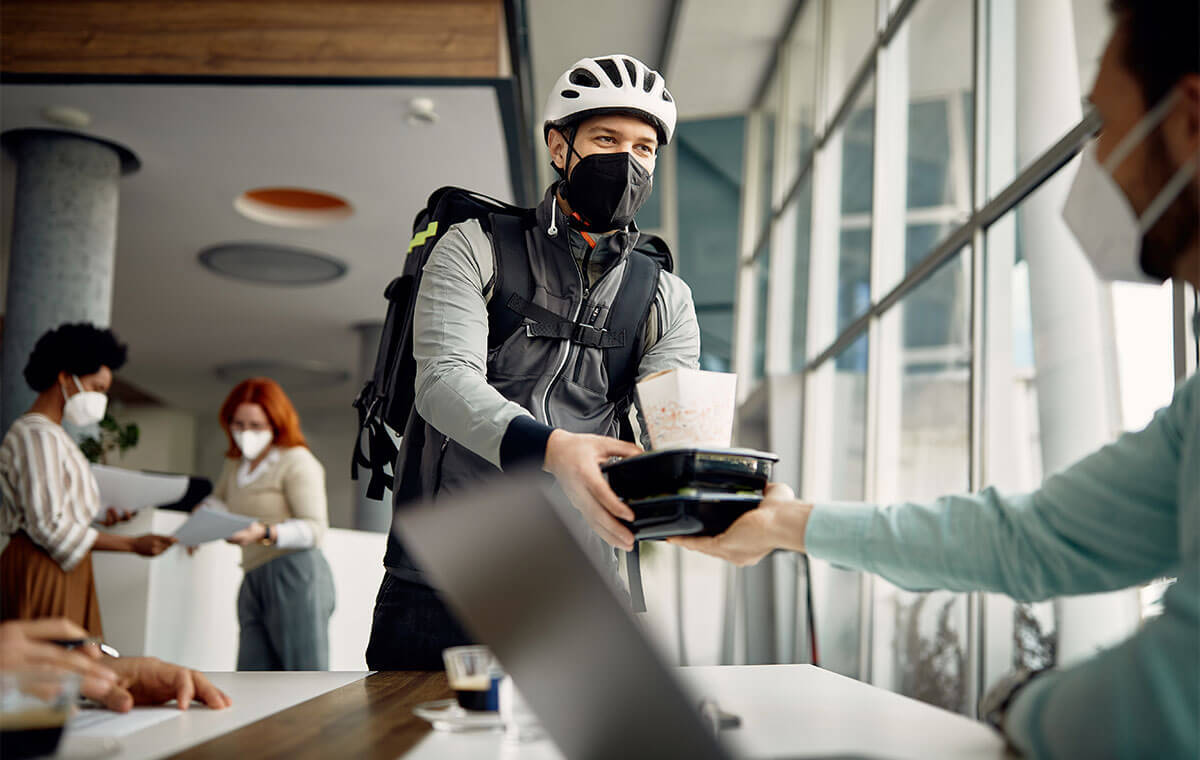Before the pandemic, many office workers purchased goods and services from local stores near their offices, supporting central business districts (CBDs) and keeping neighborhoods afloat. Pre-pandemic, it was more convenient to shop this way while working in-person.
Recent data tells a different story. In an American time use survey, the Bureau of Labor Statistics found that the average time per day that individuals spent shopping in 2020 — which includes online and in-person shopping — declined by five minutes from 2019. Furthermore, only 25% of individuals aged 15 and over visited a grocery store, other store, or mall on a given day in 2020, compared to 31% in 2019.
Consumer spending habits have continued to change drastically, with workers shopping online more frequently than ever before. Let’s take a closer look at how and why these habits are making us view modern retail experiences through a different lens.
Small Businesses Pay The Price
It’s no secret that when the transition to fully remote and hybrid work models occured, retailers suffered. Small businesses paid the heftiest price: changes in consumer behavior and health concerns led to more than 200,000 small business closures in the United States.
With small businesses accounting for 44% of total U.S. economic activity, these closures have been a massive blow to CBDs . This is because small businesses make up the majority of the retailers we interact with on a daily basis: there are over 31.7 million small businesses in the U.S. that comprise 99.9% of all firms and 99.7% of firms with paid employees.
So what can office owners and operators do to support local retailers?
The answer lies in how consumers are now spending their income: technology enablement has allowed workers to fully embrace online and digital retail services. For instance, a busy employee may opt to order groceries from the convenience of their phone, rather than spend more time browsing the aisles of their neighborhood grocery store after work.
Differentiating Through Office Food Ordering and Retail
The key to supporting surrounding businesses lies in connected retail capabilities, which might include integrating office technology with leading restaurant platforms like Toast. As part of a hospitality-first strategy, building owners can partner with local retailers in a meaningful way that not only brings engaging tenant experiences to the workplace, but also strengthens relationships with the neighborhood by bringing perks and benefits directly to the workforce while simultaneously supporting local businesses and their goals.
The simplest way to achieve this is through employee’s cell phones: 79% of smartphone users have made a purchase online using their mobile device in the last six months. These purchases may range from ordering food at their favorite restaurants, to paying for convenience products throughout the day.
With so many options available, it’s critical to note which retail services tenant employees really want. In a recent poll conducted by HqO, 63.2% of respondents said they wanted food and beverage options as an office amenity. In a second poll, 45.5% of respondents revealed that they order food two to three times a week through a delivery website or app. But that’s not all they were interested in. 17.8% of respondents said they’d also like access to pharmacy or convenience stores, and 14.7% wanted retail discounts at work.
Since office food ordering is a top priority for many employees, why should they not be able to make group or individual orders while at work?
These diverse dining and retail experiences can all be achieved through a tenant experience platform. Leveraging a connected building app allows property owners and managers to automate core functions of their property such as the food ordering process.
David Morton, Owner of Chicago-based DMK Restaurants, explained how connected retail enhances property experiences in a recent Let’s Go Show podcast: “When you aggregate experiences within a property, it creates a harmonious link that uses technology and the human form for something richer. We’re in the process of ushering in a whole new version of experiences that are consumer-focused and thoughtful.”
By providing building occupants with retail capabilities like office food ordering and in-app purchasing, you are not only making their lives easier, but allowing them to build up their local community. Bringing the best aspects of the workplace community to tenants in a tech-enabled and desirable way will continue to benefit employees and local businesses alike.
Learn more about creating a people-first workplace strategy that supports your community today.



